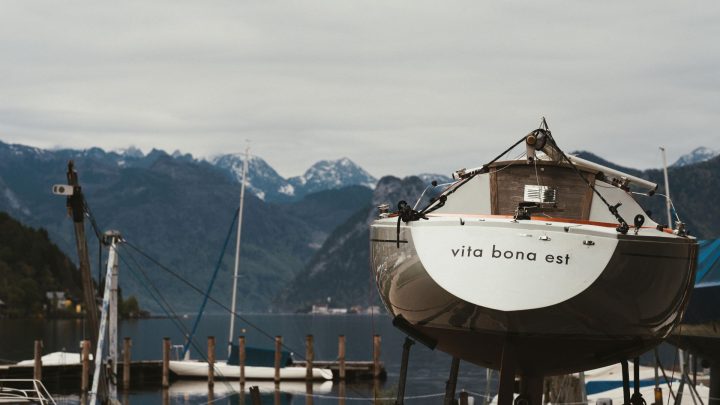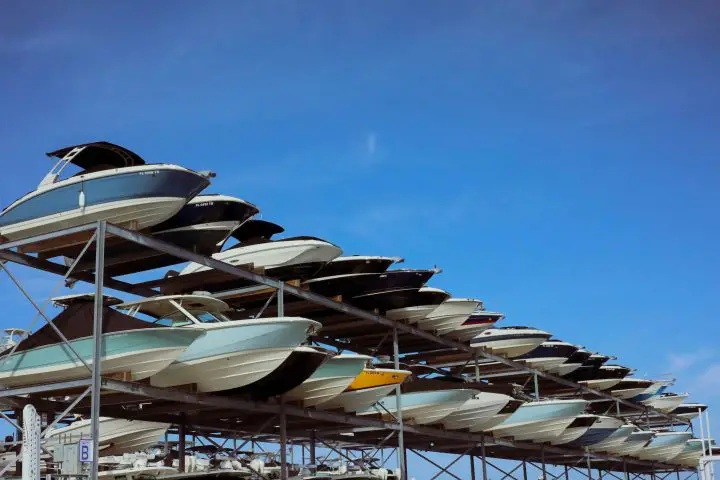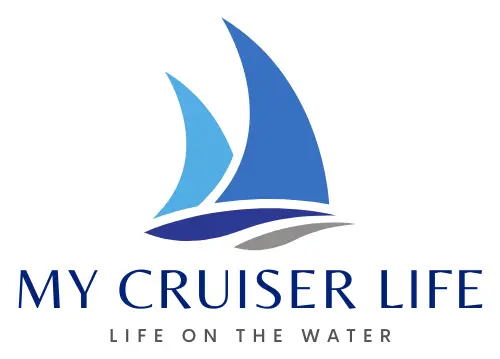When temperatures start dropping, knowing how to winterize your boat becomes crucial for protecting your investment from winter’s destructive power. Freezing water expands with devastating force, but smart preparation prevents expensive damage while extending your boat’s lifespan. The systematic winterization process covers every critical system from engine fogging to fuel stabilization, using proven techniques refined over decades of boating experience. Master the essential steps for protecting engines, water systems, and electrical components during storage. When warmer weather returns, your boat will fire up perfectly while others deal with repair delays. Thorough winterization saves thousands in costly repairs and guarantees reliable performance season after season.

Table of Contents
- Gather Supplies
- Clean the Boat
- Engine Preparation
- Fuel System
- Water Systems
- Electrical System
- Cover and Store Boat
- Final Checklist & Safety Tips
- Ready for Spring Adventures
- FAQs – How to Winterize Your Boat
Gather Supplies
Boat winterization kits make winterizing your engine a breeze and come stocked with antifreeze, fogging oil, and fuel treatment. You’ll need 3 to 5 gallons of marine antifreeze for most boats, though larger vessels require more. Marine antifreeze contains rust and corrosion inhibitors that help protect your boat’s plumbing, unlike basic automotive antifreeze.
Essential Winterization Supplies:
- Marine antifreeze (propylene glycol-based, 3-5 gallons)
- Marine fuel stabilizer (treat based on tank capacity)
- Fogging oil for cylinder protection
- Fresh engine oil (check capacity in owner’s manual)
- New oil filter and fuel filter
- New fuel/water separator
- Marine-grade shrink wrap or fitted boat cover
- Moisture absorbers (multiple units for cabin)
- Oil extractor pump
- Battery maintainer/tender
- Basic hand tools (wrenches, socket set)
- Marine cleaning soap and protective wax
Marine fuel stabilizer is especially important if your boat has a carburetor instead of fuel injectors, since unstabilized fuel left in a carburetor can oxidize more quickly during storage. Look for heavy-duty tubing, leak-proof fittings, and compatibility with marine-grade antifreeze for reliable long-term protection when selecting winterization kits.
Stock up early – winter supply shortages drive prices up and limit availability when everyone’s rushing to winterize before the first freeze.
Clean the Boat
Mildew is most common in damp, poorly ventilated places and can damage your boat’s upholstery, painted surfaces, and vinyl. Starting with a clean boat prevents trapping contaminants under covers for months. Check for cracks, blisters, or other damage that can worsen in freezing temperatures and repair any existing damage.
Cleaning Checklist:
- Wash hull thoroughly with marine soap, removing all salt deposits
- Apply marine wax for UV and moisture protection during storage
- Vacuum all carpets and wipe down upholstery completely
- Clean storage compartments and remove all food/beverages
- Empty and clean refrigerator/freezer, prop doors open
- Remove all trash and organic materials
- Wipe down all surfaces with mildew-preventing cleaner
- Check and clean bilge areas thoroughly
- Inspect through-hull fittings and hardware
Apply a coat of marine wax to protect the hull from moisture and UV damage. This creates a protective barrier that sheds water and prevents oxidation during storage months.
Propping open all storage compartments and hatches to allow adequate airflow is the best way to prevent mildew from forming. Place moisture absorbers throughout the cabin after cleaning. Make sure any equipment you’re storing is entirely dry before closing up compartments.
Thorough cleaning now prevents musty odors, stained upholstery, and surface corrosion when you uncover your boat in spring.
Related: How to Store a Boat: Everything You Need to Know
Engine Preparation
Water trapped in lines, filters, and the engine block can freeze and expand, causing severe damage. Engine preparation is critical because any water left inside the engine’s cooling system can freeze, expand, and cause catastrophic damage to the engine block or manifolds, leading to thousands of dollars in repairs.
Engine Winterization Steps:
- Change engine oil and filter while the engine is warm
- Replace gear oil in outdrives and lower units
- Fog engine cylinders with aerosol fogging solution
- Flush the cooling system and drain all water completely
- Run marine antifreeze through inboard/sterndrive cooling systems
- Remove spark plugs, inspect, and replace if needed
- Lubricate all grease fittings and moving parts
- Check belts and hoses for wear or damage
For the last 10 seconds or so of engine operation, spray the fogging fluid into the flame arrester on the carburetor. Always check your owner’s manual before fogging and follow manufacturer recommendations because some newer engines have specific procedures.
Store outboard motors fully trimmed down to allow any water in the cooling system to drain out on its own. For inboards, bring the engine up to operating temperature before running antifreeze through, because otherwise the thermostat will block the flow to some cooling passages.
Fuel System
Winterizing with ethanol-blended fuel in your tanks can be disastrous otherwise, as the fuel can undergo phase separation. When ethanol separates from gasoline, it creates a corrosive mixture that damages fuel lines and injectors.
Fuel System Protection:
- Fill tank to 95% capacity (leave room for expansion)
- Add marine fuel stabilizer before filling the tank
- Use ethanol-free fuel when possible
- Run engine 10-15 minutes to circulate treated fuel
- Replace the fuel filter and water separator
- Turn off the fuel valve if equipped
- Run the carburetor dry on carbureted engines
- Check fuel lines and connections for leaks
Fill your fuel tank up to almost full and treat it with a fuel stabilizer, but don’t fill your tank up all the way, as the fuel could run out of the vent if it were to expand on a warm day. When refilling your boat with fuel, make sure you’re using ethanol-free fuel to limit the risk of degradation during storage.
Sometimes people remove the fuel/water separator, invert it to pour the water out, and then re-use it. This is a big mistake – always install fresh filters. Marine fuel stabilizer is especially important if your boat has a carburetor, since unstabilized fuel can oxidize more quickly during storage.

Water Systems
The water system includes freshwater tanks, pumps, water heaters, faucets, and toilets, and contains water that can freeze, expand, and crack pipes, fittings, and fixtures. Every drop needs draining or antifreeze protection.
Water System Winterization:
- Drain the freshwater tank completely
- Open all faucets and run pumps until dry
- Flush toilets and drain holding tanks
- Pump marine antifreeze through the entire system
- Winterize water heater (drain and bypass)
- Protect raw water washdown systems
- Drain the livewell and circulating pumps
- Add antifreeze to the bilge pump and lines
- Remove the boat’s drain plug for bilge drainage
Properly winterizing the water system involves completely draining all existing water and then circulating non-toxic marine antifreeze throughout the entire network. Remove the primary hose feed and place it into a bucket of antifreeze. Turn on every fixture and faucet until antifreeze comes out.
Marine antifreeze consists of propylene glycol and is non-toxic and not as harmful to the environment as automotive antifreeze. If you still hear gurgling and you know there’s water that can’t be drained out, give them a dose of antifreeze, too.
Electrical System
A battery left connected and unmaintained will slowly discharge, leading to sulfation, a process where lead sulfate crystals build up on the battery plates, permanently reducing its capacity and lifespan.
Electrical System Care:
- Fully charge all batteries before storage
- Remove batteries and store indoors above freezing
- Connect the smart battery maintainer if removal isn’t practical
- Turn off all non-essential circuit breakers
- Remove portable electronics (GPS, radio, fish finder)
- Clean battery terminals and apply protectant
- Inspect all wiring for damage or corrosion
- Record security codes before disconnecting power
Charging your boat’s marine or deep-cycle batteries before winter greatly reduces the risk of the battery freezing in colder temperatures. The best practice is to remove the fully charged batteries and store them in a cool, dry place indoors, like a garage or basement, where temperatures remain above freezing.
If removing batteries isn’t practical, connect them to a quality smart battery maintainer, such as those from Battery Tender or NOCO. Whether or not to plug your battery into a maintainer depends on the battery type. Lithium-ion batteries are not designed to be stored fully charged for an extended period of time.
Related: How To Read Nautical Charts Like a Pro: 10 Essential Tips
Cover and Store Boat
Ironically, it’s water that poses the most danger to your boat during the off-season – not just freezing, but also promoting mold, mildew, and corrosion. If you keep your boat in a heated garage, we still recommend winterizing your boat. This is a cheap insurance policy for power and gas outages or if a garage door were to be left open.
Storage Location and Setup
Choose your storage location carefully, prioritizing good drainage and wind protection. Avoid low-lying areas where water might pool around your boat or trailer. Store outdrives and outboards in the down position so water can drain; otherwise, ice can crack the housing. Position your boat level or slightly bow-up to encourage proper drainage throughout the storage period.
Covering Options
A high-quality, breathable boat cover is essential for protection from snow, ice, and dirt. Choose a breathable cover to prevent mold and mildew, and make sure the cover fits snugly. If you can’t store your boat in climate-controlled storage, shrink-wrap it for the next best type of protection. Install cover support systems to prevent dangerous snow accumulation that can collapse covers and damage your boat.
Ventilation and Final Steps
Ventilation can be active or passive, including cowl ventilators, clamshell ventilators, and louvered ventilators. If shrink wrapping, ensure your installer includes proper ventilation ports. Place moisture absorbers throughout the cabin and remove all valuables and anything that could attract pests before sealing up your boat for winter.
Final Checklist & Safety Tips
BoatUS receives complaints every year from boat owners who thought the marina would winterize their boat, but the marina didn’t do it or didn’t know they were supposed to. Whether DIY or professional, systematic verification prevents costly oversights.
Professional vs DIY Approach
If the project seems overwhelming, consider having a professional winterize your boat. Get your winterization done by a certified technician and not your neighbor. Most likely, you just invested a good amount of money into your beautiful boat. Insist on a written contract that clearly lists every job necessary to protect your boat and has a firm time frame, beginning well before the first typical hard freeze.
System Verification
Go through each system methodically:
- Engine oil changed and fogging completed?
- Fuel stabilized and fresh filters installed?
- All water systems drained and protected with antifreeze?
- Batteries charged and either removed or connected to maintainers?
Inspect spark plugs and replace if necessary. Check belts, hoses, and connections for wear. Touch up any new scrapes or bumps, and let the paint dry fully before you wrap or cover the boat.
Ongoing Monitoring
Even with proper preparation, winter boat storage requires occasional checks. Look for signs of moisture, pests, or damage. Early detection can save you time and money when spring arrives. Use less toxic propylene glycol antifreeze. If practical, capture any antifreeze in a bucket when flushing to prevent overboard discharges. Document everything with photos and notes for spring commissioning and next year’s reference.
Ready for Spring Adventures
Proper winterization is your boat’s insurance policy against winter’s destructive power. Preventing freezing damage, rust and corrosion, and fuel degradation saves thousands in costly repairs while extending your boat’s lifespan. The systematic approach we’ve covered – from gathering supplies through final storage – protects every critical system.
Whether you tackle winterization yourself or hire professionals, thoroughness beats shortcuts every time. By following these steps, you’ll protect your investment and ensure smooth sailing next season. When spring arrives and others are stuck at repair shops dealing with cracked blocks and fuel system problems, you’ll be first on the water, making memories. That’s the real reward for winterizing right.
FAQs – How to Winterize Your Boat
Can you winterize a boat yourself?
Yes, most boat owners can successfully winterize their boats themselves with proper preparation and tools. Outboard-powered boats are easier than inboards or sterndrives. The process involves changing fluids, adding antifreeze to water systems, fogging the engine, and proper storage preparation. While DIY winterization saves money, consider professional service for complex systems or if you’re uncomfortable with any procedures to avoid costly mistakes.
When should a boat be winterized?
Winterize your boat before the first expected hard freeze in your area, typically late fall or early winter. Even in warmer climates like Florida or Texas, winterization is recommended as unexpected cold snaps can cause expensive damage. Start the process when daytime temperatures consistently drop below 50°F and nighttime temperatures approach freezing. Don’t wait until the last minute – supply shortages and service scheduling become problematic.
How do you de-winterize a boat?
De-winterizing reverses the winterization process. Remove antifreeze from water systems by flushing with fresh water, reinstall batteries, change engine oil if needed, and inspect all systems for winter damage. Check fuel quality and add fresh gas if necessary. Test all electronics, pumps, and safety equipment. Inspect the hull, propeller, and running gear. Start the engine and check for proper operation before launching.
What is the most popular method of winterization for boats?
The most popular winterization method combines draining water systems and using marine antifreeze for protection. This involves changing engine oil, fogging cylinders, stabilizing fuel, pumping antifreeze through freshwater systems, and proper storage with covers or shrink wrap. This comprehensive approach protects against freezing damage while preventing corrosion and fuel degradation. Professional services often use this same systematic method for reliable protection.
